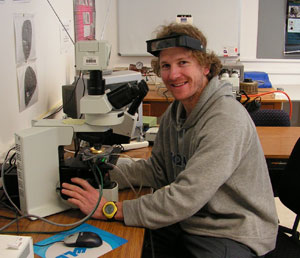Biography:
Adam Bath began his earth science studies at the University of Newcastle in 1999 and was awarded with a B.Sc in 2003. In 2000 Adam was awarded a scholarship to study at the University of Victoria (Canada), and while on exchange Adam was employed by the University of Victoria and British Columbia Geological Survey Branch as a field assistant. As a field assistant Adam was involved in a TGI-funded bedrock mapping project within the Atlin area during the summer of 2002. Between 2004 and 2005 Adam completed a B.Sc (HONS) at the University of Tasmania. The honours research project was on the geochemistry of the Gawler Range Volcanics, South Australia.
The study demonstrated that melt inclusions have unusually high amounts of fluorine, which may have been important in lowering melt viscosity and thus may explain the wide extent (>25,000 km2) of rhyolitic lava flows. The project was awarded 1st class honours. During 2005 and 2006 Adam was employed by the British Columbia Geological Survey Branch as a field geologist to carry out bedrock mapping within the Quesnel Lake area. Field work in the Quesnel Lake area allowed Adam to begin work on alkalic porphyry systems in British Columbia, which he is now perusing as part of a PhD project. Adam’s research on alkalic porphyry systems in BC is supported by the British Columbia Geological Survey, Geoscience BC, MDRU, CODES, Teck-Cominco, Imperial Metals and SEG.
